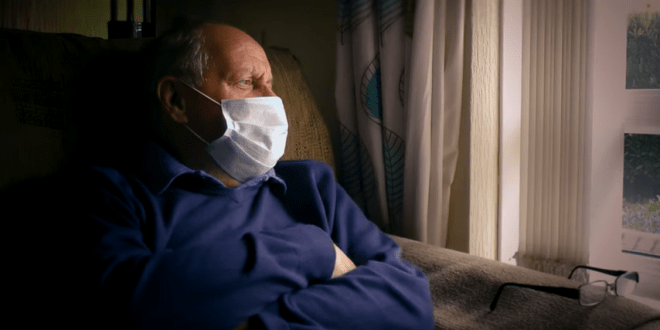What is a nursing assessment order?
Assessing a patient is essential for a nurse to keep the patient medically fit and fine. The assessment process is usually carried out by what is known as a Registered Nurse (often abbreviated to RN in most medical institutions). A nursing assessment order is nothing but the act of collecting information from the patient-relevant to his medical history. It is one of the first steps involved during nursing, and all possible information, be it psychological, mental, pathological, subconscious, is obtained. Nurses are trained to extract such information in one way or the other after determining the patient’s condition. Once the required data is collected, it becomes extremely important to plan out a way of thinking by critically analyzing the facts presented and laying out a plan that briefly lists all the standard operating procedures required for the treatment of the patient concerned.
What are the five phases of the nursing assessment order?
The Assessment Phase:
Assessing the patient itself is the first stage of the nursing assessment order.
In a normal head-to-toe assessment that is conducted, (head-to-toe assessment refers to a general physical assessment), there are a few checkpoints that are taken care of, some of which are listed below:
- Check for the general status of the patient: In the general status, some of the vital signs of the patient are taken note of, for instance, the heart rate, blood pressure, chest status using a stethoscope, temperature, respiratory status, and much more.
- Inspection: Once the above step is completed, then the physical traits of the patient are seen, for instance, the color of the eyes and lips are seen, any damage in the gums is seen, the tongue and tonsils are examined, the sense of smell and the sense of hearing is tested, and if required, the vision correctness is also examined. If there is a need, efforts are made to examine the nostrils and septum. Probable signs of conjunctivitis or other eye issues are checked for inside the eyes.
- Checking the pulses: In this, the pulses in the arms and legs are checked, including the radial and the femoral, as well as the posterior tibial.
- Inspecting the skin: Skin is predominantly the most exposed part of the body. Throughout the day, various bacteria and microorganisms interact with it. A detailed checkup of the skin is taken in which steps are taken to identify dead skin cells or any rashes or infections that have developed or can develop in the future. Everything is covered under this test: lumps, lesions, abrasions, scratches, and everything is covered.
- Keeping a check on respiratory issues: The patient’s breathing pattern is observed, and the chest and other relevant portions are examined using a stethoscope or any other required medical device. The sound of the lungs is heard from the front and from the back. The patient is questioned on any coughing history or any uneasiness they feel, which needs immediate attention.
Once all these steps are followed, a checklist has been fulfilled, and it enables the practitioner in concern to take a decision.
The Diagnosis Phase:
This is the stage that follows the assessment stage. Based on all the information collected in the assessment stage, a particular plan of action is created, and the patient is diagnosed with certain ailments whose symptoms match the patient’s condition. All efforts are made keeping in mind the consequences of the patient’s well-being.
The Planning Phase:
This stage follows the diagnosis stage. Once a proper diagnosis is made in the previous stage, a proper action plan is created. This plan is like a schema – what should be the treatment followed, what medicines are to be given, what should be the dosage of the medicines, which doctors to keep in touch with, which bed should the patient occupy, what should be the food requirements – and much more. This is more like an ideation stage where all points are considered and planned out accordingly based on the health and well-being of the patients so that they can be cured.
The Implementation Phase:
This is the stage that follows the planning stage. Once a proper plan of action is created, it is figured out how to implement it. It is at this stage wherein the required people are appointed. Based on the requirements in the plan of action and the severity of the case, the requisite arrangements are made for the smooth flow of the daily work of the medical institution.
The Evaluation Phase:
Following the implementation stage, it is at this stage where a proper evaluation of the model is made. A proper scale is assessed to determine how effective the model has been so far and if any loopholes need to be corrected for the future.
What are the different types of nursing assessment orders?
Apart from the various processes involved in a nursing assessment, there are also different types.
● The Initial Assessment: As the name suggests, this is a brief examination of the patient’s medical condition. It is also referred to as “triage” in the medical world. This stage is extremely crucial because all other further assessments are made on the assumption that a broad piece of mind has been applied in the initial assessment. The initial assessment only benchmarks a particular area, and from that particular area, further details are deciphered through the next types.
● Focused Assessment: This stage follows the initial assessment phase, and here the proper treatment starts. Whatever estimations were made in the initial stage are pondered upon here, and care is taken to provide ample support to the patient. Since the patient’s medical condition can change quickly, efforts are made to provide all support so that the patient is relieved from the troubles he is endeavoring.
● Assessment based on time: This is more like an observation phase. Once the patient has received optimum medical treatment, it is not that the patient is discharged immediately. The patient is often kept under observation at fixed time intervals, either after a few hours or a few days, to check how the patient is reacting to the treatment provided. If the doctors or nurses notice any abnormality in the patient’s health conditions at any point in time, care is provided at that instant.
● Assessment based on emergency: There are often times when a patient’s health changes suddenly, in cases where there were no expectations of any contingency. Such conditions have to be treated in emergency criteria. All efforts are made to examine the root cause of the condition and provide immediate aid to the patient. Emergencies often demand extraordinary needs, and all nurses and doctors have to be mentally capable to adhere to such situations.
These are some methods by which a proper nursing assessment order is carried out on a patient for effective treatment. It is like a standard operating procedure that enables them to carry out their tasks effectively. At the end of the day, the patient’s health is of utmost importance, and no compromises can be made on it whatsoever, no matter whatever the excuse may be.
 Nursing Trends
Nursing Trends







